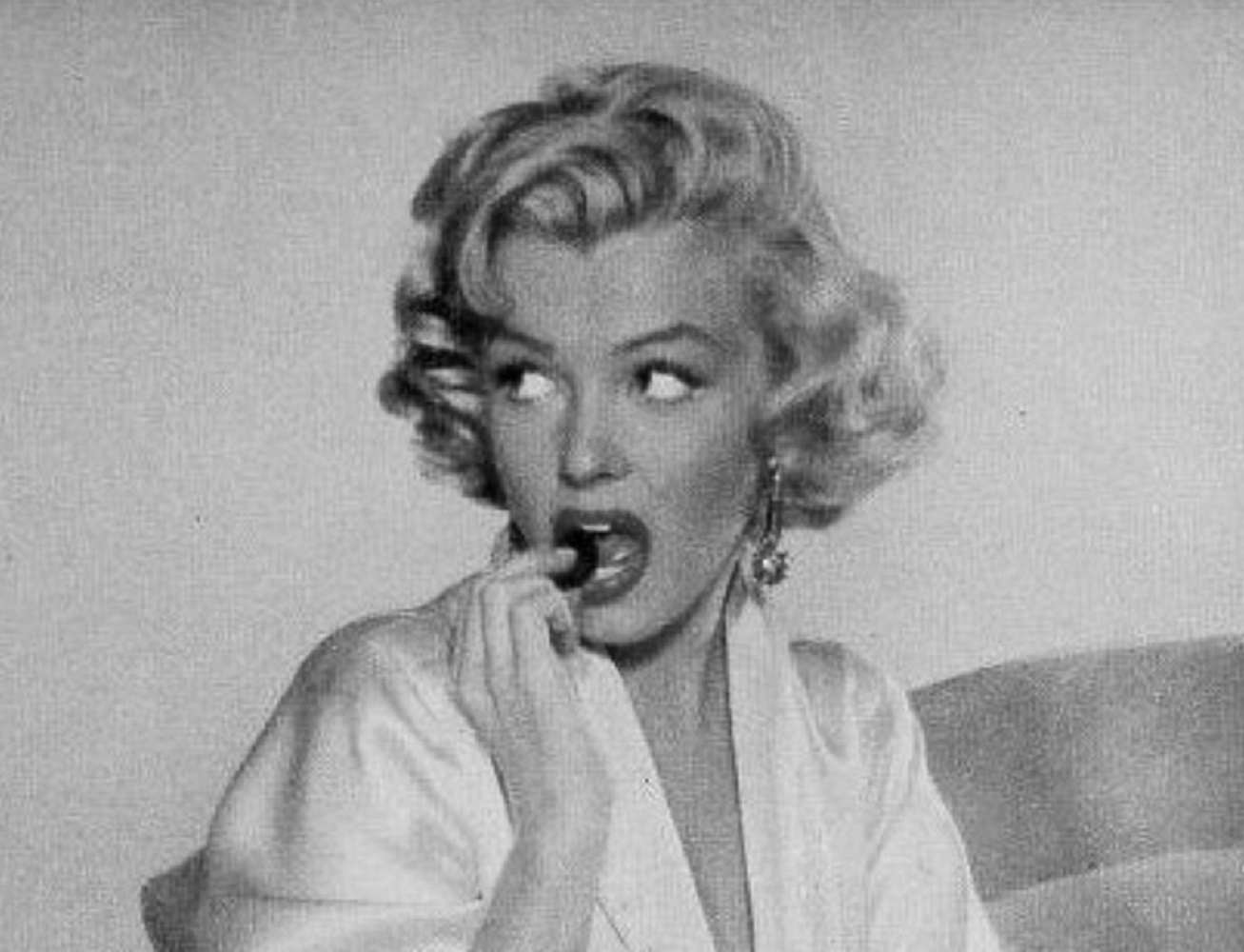Marilyn Monroe’s face, among other things, is still one of the most recognized of any actress ever to grace our screens. Known for both her star power and dramatic life, fewer people are aware of the woman that gave birth to her—Gladys Pearl Baker. Just like her daughter, Baker's life of incomparable tragedy is definitely cinema-worthy.
1. She Had A Rough Start
From the very beginning, neither of Gladys Pearl Baker’s parents seemed to have much to offer her. Her father worked as a railway car painter, and her mother worked as a midwife and teacher when they had her in Mexico in 1902. They didn’t work the most high-class jobs, but money proved to be the least of their many shocking issues.
 Silver Screen Collection, Getty Images
Silver Screen Collection, Getty Images
2. Her Father Was Troubled
Baker’s father terrorized his family in their home. He suffered from terrible headaches, seizures, and dementia. He also had a terrible drinking problem. We can only imagine the horrors a very young Baker and her younger brother faced at his hands. His life ended at a mental institution in 1909, but it was only the beginning of the family’s horrors.
 Plan B Entertainment, Blonde (2022)
Plan B Entertainment, Blonde (2022)
3. Her Mother Was Unstable
Baker’s mother remarried several times. She ultimately divorced two more husbands over several years, citing issues with too much drinking in each instance. She remained undeterred, though. By 1916, her mother involved herself with a man Baker disliked. Perhaps all this instability contributed to her first eyebrow-raising romance.
 Fireworks Entertainment, Blonde (2001)
Fireworks Entertainment, Blonde (2001)
4. She Liked Older Men
Around this same time, Baker began a romantic relationship with a man more than twice her age. Only fourteen at the time, she found herself attached to thirty-year-old John Newton Baker. You’d probably expect a normal parent to be disturbed by this kind of situation. But judging by Baker’s mother’s next move, she felt quite differently.
 Fireworks Entertainment, Blonde (2001)
Fireworks Entertainment, Blonde (2001)
5. She Married Young
Within a year of Baker and Newton’s first meeting, her mother gave permission for them to marry. She signed papers alleging Baker was eighteen, and thusly of age. Teenagers falling in love and making bad decisions doesn’t surprise anyone, but Baker’s life with her new husband likely shattered every idea of the fairytale love she imagined.
 Silver Screen Collection, Getty Images
Silver Screen Collection, Getty Images
6. She Grew Up Too Fast
In 1918, Baker birthed her first child, Robert. The very next year, she had her daughter, Berniece. Still just a teenager herself, the situation forced Baker to take on more responsibility than ever before. She now had a little family to support. Unfortunately, her best efforts proved to be disastrous.
 Fireworks Entertainment, Blonde (2001)
Fireworks Entertainment, Blonde (2001)
7. Her Son Got Hurt
Gladys Baker likely found her young life of being both a mother and wife hard enough, but one unfortunate incident added insult to injury. During a car ride with her family, her young son fell out of the vehicle. He survived, but his injuries rendered him disabled. Sadly, even worse circumstances made life with her first family a horror.
 Plan B Entertainment, Blonde (2022)
Plan B Entertainment, Blonde (2022)
8. She Wasn’t Safe At Home
Baker suffered enormous violence at the hands of her husband, who allegedly beat her throughout their entire relationship. After six horrendous years with Newton, and no longer a teen, Baker finally filed for divorce. Courts gave her custody of her two children, but her now ex-husband had his own devious plans.
 Don Carmody Television, The Secret Life Of Marilyn Monroe (2015)
Don Carmody Television, The Secret Life Of Marilyn Monroe (2015)
9. She Lost Her Children
Rather than obeying the court mandates, Newton took his children away from Baker without her consent. He kidnapped them, whisking them away to Kentucky to start brand new lives. Baker’s mother claimed her daughter changed after Newton took her children away, and started drinking too much.
Clearly the loss was too much—she had to take action.
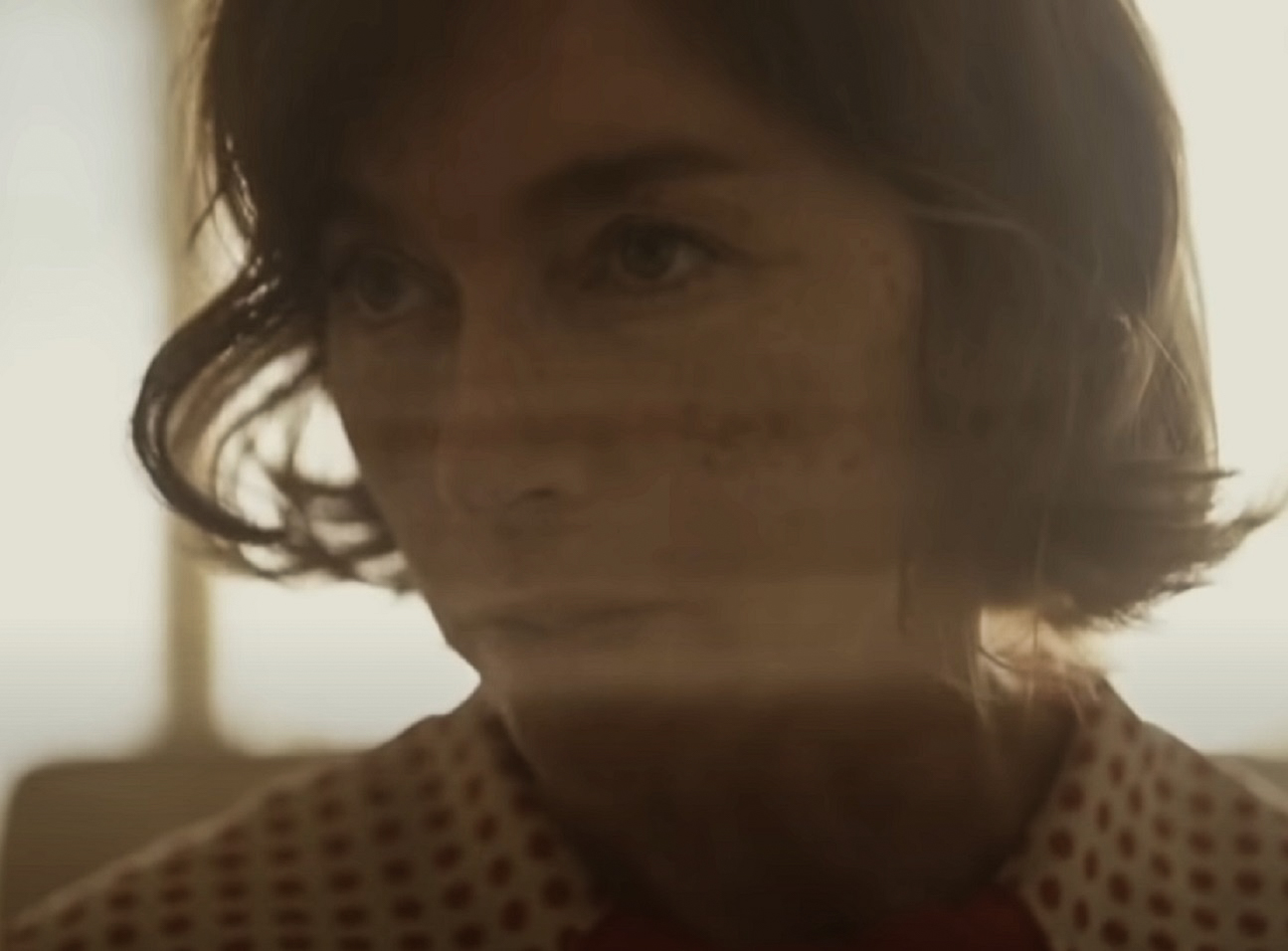 Plan B Entertainment, Blonde (2022)
Plan B Entertainment, Blonde (2022)

History's most fascinating stories and darkest secrets, delivered to your inbox daily.
10. She Failed At Motherhood
Baker followed her children to Kentucky about a year after Newton took them. Unfortunately, she quickly realized she had no support system—nobody to help her regain custody. So, whether because she wasn’t truly able to care for kids, or because she was still afraid of her ex-hsuband, Baker gave up after four months—and headed back to her California hometown.
There, she expereinced her first brush with Hollywood, but not in the way you might expect.
 Don Carmody Television, The Secret Life Of Marilyn Monroe (2015)
Don Carmody Television, The Secret Life Of Marilyn Monroe (2015)
11. She Changed
Back in California, Hollywood sparkled with the allures of the Roaring Twenties. Baker landed a job cutting film in a studio, but it was her friendship with Grace McKee, a supervisor, that changed her life. Together, the two embraced the glamorous flapper ideals of the time. It seemed an opportunity to turn things around, but it ended up being anything but.
 Fireworks Entertainment, Blonde (2001)
Fireworks Entertainment, Blonde (2001)
12. She Did It Again
Just a few years after her move, Gladys Baker found herself in another romantic relationship with an older man, Martin Mortenson. Mortensen showed himself to be quite different from her first husband, with a life of stability and a good job at a gas company. However, all his “good guy” charm wasn't enough to keep her.
 Fireworks Entertainment, Blonde (2001)
Fireworks Entertainment, Blonde (2001)
13. He Was Too Good For Her
After spending a year with Mortensen, Baker picked up and left him in 1935 to move in with her friend, McKee. Reports indicate that Mortensen didn’t agree to this separation, and wanted his wife back. She refused him, however, and courts finalized their divorce in 1928. The intense drama of her next relationship probably made her miss Mortensen’s mundane life.  Fireworks Entertainment, Blonde (2001)
Fireworks Entertainment, Blonde (2001)
14. She Had Questionable Taste
Baker’s next entanglement started as a bit of an “office romance". Charles Gifford worked above her in the film studio, and the two began dating sometime in 1925. It’s quite possible that she didn’t take their relationship too seriously, since they both continued to date around. But a change in circumstances made the fling suddenly consequential.
 Unknown photographer, Wikimedia Commons
Unknown photographer, Wikimedia Commons
15. She Messed Up
In 1925, the same year Gifford finalized his divorce with his wife, Baker found out she was pregnant. The two appeared to make an attempt at making their relationship legitimate, with Gifford bringing Baker to meet his family. It didn’t go well. His family didn’t approve of her or her messy past, turning a happy occasion into a disaster. Unknown author, Wikipedia
Unknown author, Wikipedia
16. She Kept Secrets
Technically, Baker was still married to Mortensen when she gave birth to her daughter in 1929. As she refused to even let Gifford see her in the hospital, it’s unsurprising that she named Mortensen the father and gave her baby his last name, Norma Jeane Mortensen—the future Marilyn Monroe. The confusion and secrets only continued to magnify.
 Dell Publications, Inc. New York, Wikimedia Commons
Dell Publications, Inc. New York, Wikimedia Commons
17. He Moved On
With Baker’s baby not even holding his name, Gifford moved on with his life without looking back. He married another woman, and never told her about Baker or the child they shared. And even though Baker gave Norma Jeane her exes’ last name, she raised her daughter to believe that her father was not alive. Perhaps by this time, she’d lost all hope of a bright future.
 Fireworks Entertainment, Blonde (2001)
Fireworks Entertainment, Blonde (2001)
18. She Couldn’t Take It
With all the truly disturbing things she experienced in her young life, it’s no surprise that Baker’s mental health deteriorated as well. In fact, in her younger years, when she wrestled with the loss of her first two children, she reportedly showed signs of mental illness, including unfounded fears and mood swings. Caring for a new baby alone made the situation much worse.
 Plan B Entertainment, Blonde (2022)
Plan B Entertainment, Blonde (2022)
19. She Couldn’t Bond With Her Baby
Gladys Baker dealt with terrible postpartum depression after birthing her last daughter. She lived with her friend McKee, but that offered no respite. Things got so bad that Baker once tried to hurt her baby. McKee caught them both before the baby came to any harm, but that terrifying display only offered a glimpse into Baker's broken mental state.
 Fireworks Entertainment, Blonde (2001)
Fireworks Entertainment, Blonde (2001)
20. She Was Delusional
Having a new baby around is difficult for most people, but Baker’s situation got worse when she suddenly began to mistrust her closest friend and roommate. Allegedly, she harbored thoughts of McKee trying to hurt the baby, and actually tried to stab McKee as well. Clearly unable to handle her new life, Baker made an impossible decision.
 Plan B Entertainment, Blonde (2022)
Plan B Entertainment, Blonde (2022)
21. She Gave Her Up
Just a few weeks after having Norma Jeane, Baker gave her up to foster parents, Albert and Ida Bolender. Not incidentally, the Bolenders lived near Baker's own mother, giving them all the opportunity to stay close. She stayed with her baby and the foster family for six months, then headed back to Hollywood—but not without her regrets.
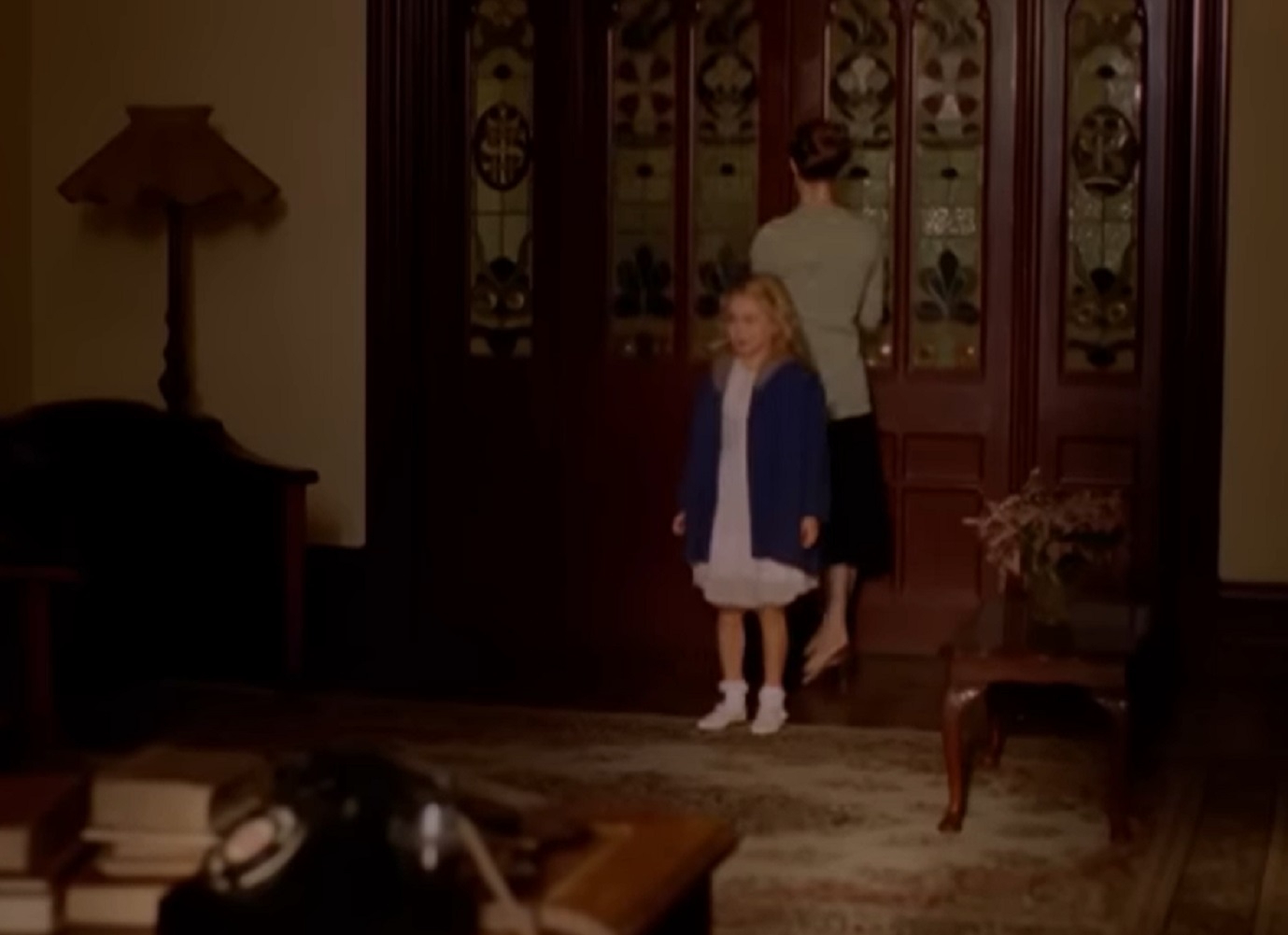 Fireworks Entertainment, Blonde (2001)
Fireworks Entertainment, Blonde (2001)
22. She Tried To Be There
Baker didn’t completely disappear from her last daughter’s life. She visited on occasion, and sometimes even brought her daughter with her to Hollywood for the weekend to spend some time together. She must have realized, however, that it wasn’t exactly the way most mothers behave, considering one shocking move.
 Fireworks Entertainment, Blonde (2001)
Fireworks Entertainment, Blonde (2001)
23. She Doubled Back
Maybe Baker felt guilty about not being there for her daughter, or perhaps her mental state was just getting worse. Either way, she showed up at the Bolenders’ home when Norma Jeane was three and attempted to run away with her child in a duffel bag. Mrs Bolander managed to stop her, but Baker's situation with her own mother soon took a distressing turn.
 Fireworks Entertainment, Blonde (2001)
Fireworks Entertainment, Blonde (2001)
24. Her Mother Deteriorated
When her mother became too sick to care for herself in 1927, Baker moved in to help care for her. Like her father did during her childhood, her mother suffered with both physical and mental illness. Doctors diagnosed her with heart issues and manic-depressive psychosis. Unfortunately, Baker’s mother didn’t only endanger herself.
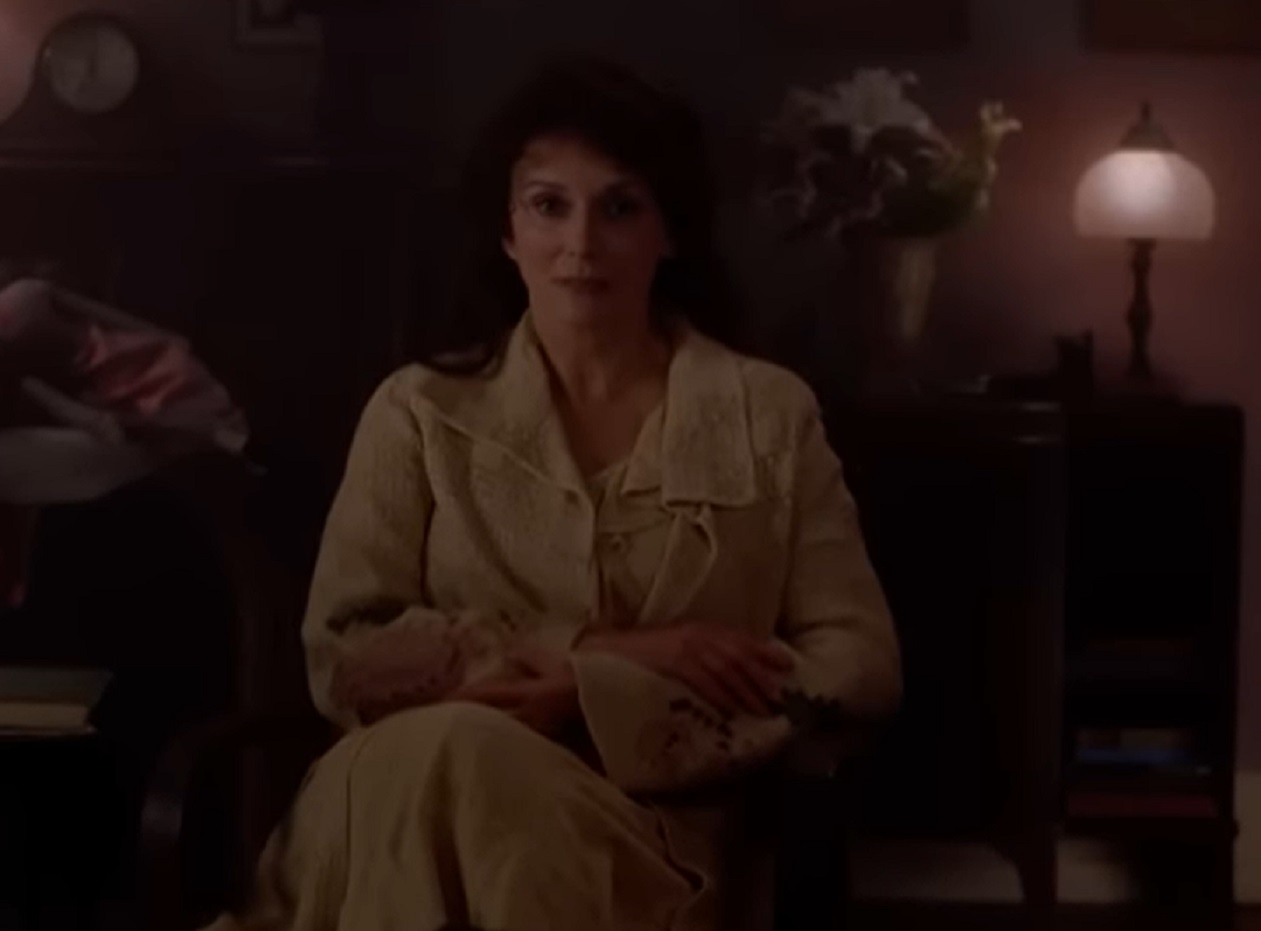 Fireworks Entertainment, Blonde (2001)
Fireworks Entertainment, Blonde (2001)
25. She Couldn’t Trust Her Mother
Much like Baker did in her own postpartum haze, her mother reportedly also threatened the life of little Norma Jeane, once even found attempting to suffocate her with a pillow. The child escaped unharmed again, but Baker’s mother’s health went downhill fast. A heart attack ended her life that same year—but this wasn't the only loss Baker had to face.
 Fireworks Entertainment, Blonde (2001)
Fireworks Entertainment, Blonde (2001)
26. Her Brother Disappeared
A few years after her mother passed, Baker received news that her brother went missing. There’s not many remaining details about her relationship with him, but it’s not hard to imagine the two forming a deep bond within their difficult childhood. Her brother's passing wasn't made official until a decade later. Still, Baker took her chance at a better life.
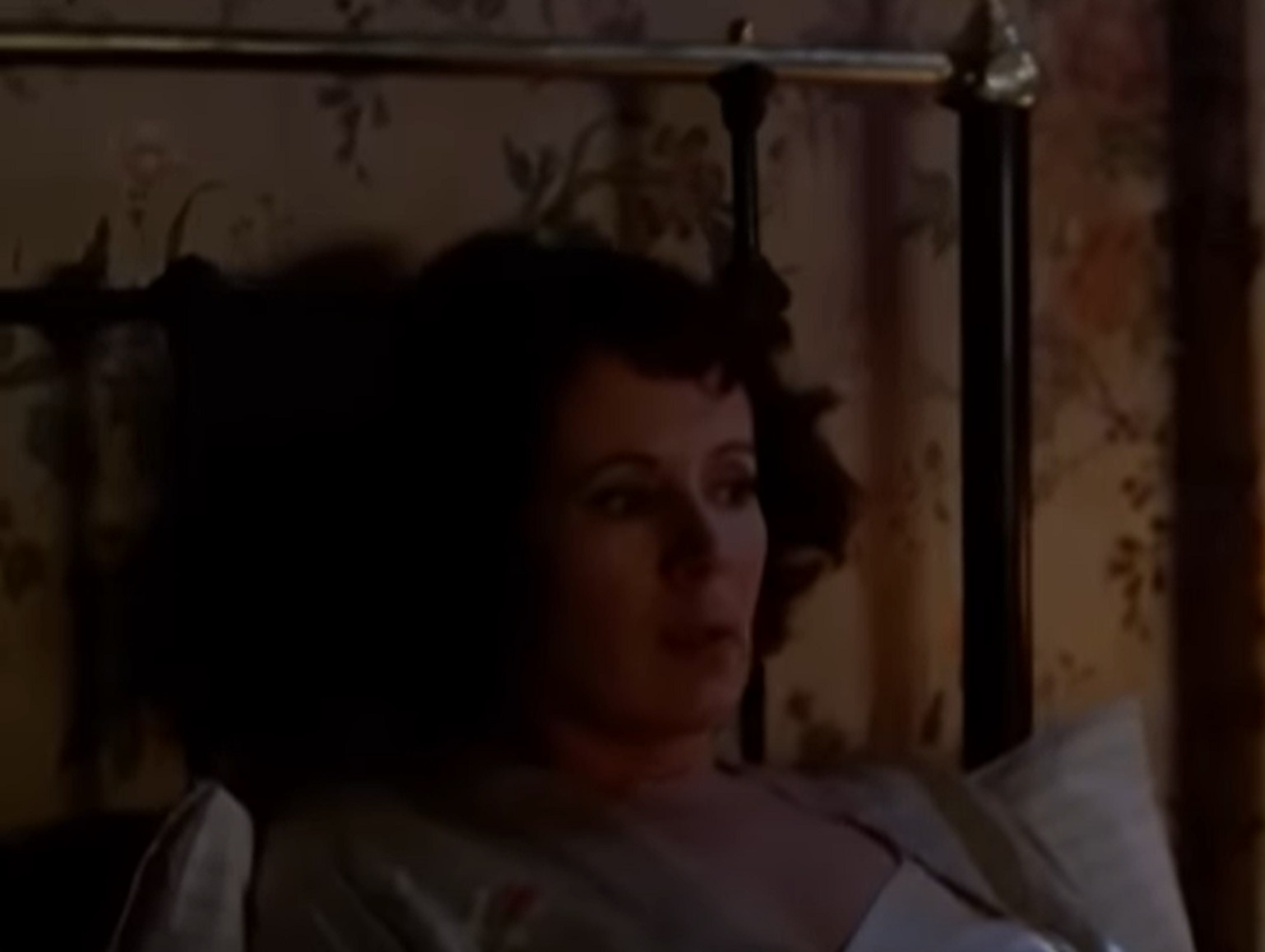 Fireworks Entertainment, Blonde (2001)
Fireworks Entertainment, Blonde (2001)
27. She Started Over
Baker set herself on the path to improvement in the early 1930s. With the Bolenders’ permission, she took a now seven-year-old Norma Jeane back in to live with her. She bought a small house for them and took in boarders to help with the cost. She meant well, but a series of tragic events completely derailed all her efforts.
 Fireworks Entertainment, Blonde (2001)
Fireworks Entertainment, Blonde (2001)
28. She Lost Him
The death of her first son became the first major tragedy to hit Gladys Baker in 1933. She hadn’t raised him, and likely hadn’t even seen him recently when kidney disease ended his life at thirteen. Norma Jeane later claimed that, for whatever reason, Baker placed the blame on her, wishing her daughter's life had ended instead.
Following this devastating blow, Baker's career took the next hit.
 Plan B Entertainment, Blonde (2022)
Plan B Entertainment, Blonde (2022)
29. They Walked Out
Somehow, Baker managed to keep her studio job throughout all the turmoil in her personal life. Seemingly, work served as one of the few stabilities of her life. That’s likely why her studio going on strike in that same year rattled her, considering she still had a home and child to provide for. But that wasn’t near the worst of it.
 Fireworks Entertainment, Blonde (2001)
Fireworks Entertainment, Blonde (2001)
30. It Ran In The Family
Records state Baker’s grandfather also struggled with some type of mental illness. The exact details of his mental health are unclear, but Baker received the news of his devastating end that same October. Her grandfather took his own life, hanging himself. That kind of news would trouble anyone, but one more bit of bad news put the final nail in her coffin.
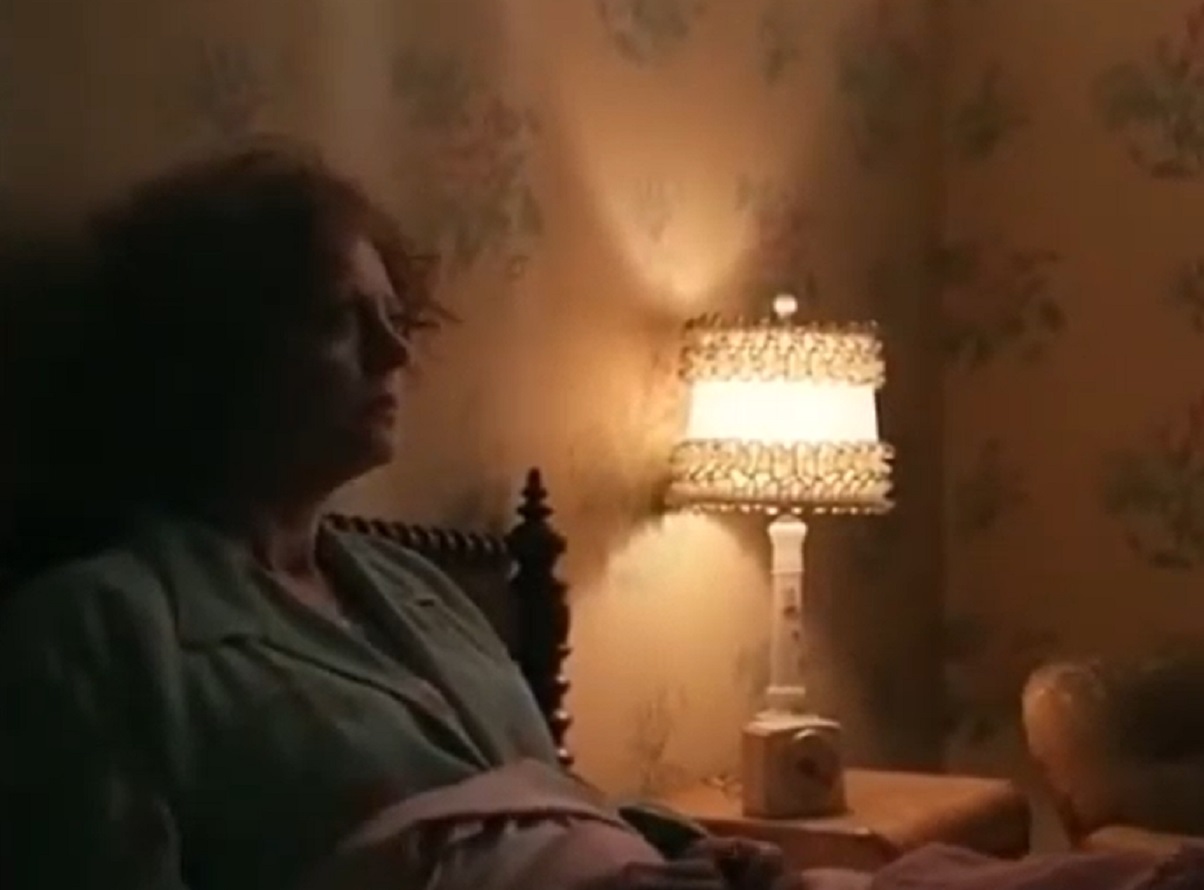 Don Carmody Television, The Secret Life Of Marilyn Monroe (2015)
Don Carmody Television, The Secret Life Of Marilyn Monroe (2015)
31. She Didn’t Protect Her Daughter
If you’ll recall, Baker shared her home with other actors, and Norma Jeane did have a few happy memories from that time. Unfortunately, the bad times seemed to outweigh the good, especially when Baker made a disturbing discovery—that someone had abused her daughter.
With her parenting failures mounting, she began to reach the end of her rope.
 Fireworks Entertainment, Blonde (2001)
Fireworks Entertainment, Blonde (2001)
32. She Fell Apart
Gladys Baker’s mental state quickly worsened in 1934. She showed signs of deep depression, and found herself unable to sleep or cope at all. McKee and Norma Jeane tried their best, but finally had to find professional help when Baker became manic one day and they couldn’t control her. They called the authorities to take her in, beginning another sad period of her life.
 Don Carmody Television, The Secret Life Of Marilyn Monroe (2015)
Don Carmody Television, The Secret Life Of Marilyn Monroe (2015)
33. She Couldn’t Cope
Doctors admitted Baker to a rest home and ultimately to a mental institution as her symptoms worsened. They diagnosed her with paranoid schizophrenia, declaring her unable to live alone. The government took over the care of Norma Jeane, and McKee became the person in charge of Baker’s affairs. McKee’s "help" soon turned into a vicious betrayal.
 Don Carmody Television, The Secret Life Of Marilyn Monroe (2015)
Don Carmody Television, The Secret Life Of Marilyn Monroe (2015)
34. Her Friend Played Her
McKee and Baker spent many years together in Hollywood, but McKee turned on her once her sickness forced her into an institution. McKee left Norma Jeane to the foster care system, which ultimately moved her through eleven temporary homes. She then went a step further, selling Baker’s house and moving away. It proved all too much for Baker.
 Fireworks Entertainment, Blonde (2001)
Fireworks Entertainment, Blonde (2001)
35. She Wanted Out
Reports aren’t clear on how much contact Baker maintained with Mckee or her daughter, but they do show she felt unhappy with her life. She tried to escape the mental hospital in the late 1930s, resulting in authorities moving her to another higher security institute. She remained institutionalized until the 1940s, when a little light shined her way.
 Don Carmody Television, The Secret Life Of Marilyn Monroe (2015)
Don Carmody Television, The Secret Life Of Marilyn Monroe (2015)
36. Her Daughter Took Her In
The mental institution finally authorized Baker to leave in 1946. She found her daughter all grown up and well into the process of becoming the certifiable star, Marilyn Monroe. Monroe’s personal life wasn’t perfect, as she was in a failing marriage, but she took Baker to live with her. As generous as she was, it did little to change Baker’s fortune.
 Milton H. Greene, Wikimedia Commons
Milton H. Greene, Wikimedia Commons
37. She Was Confused
Baker tried to help with her daughter's career, but did so while going around the house in nurse uniform and sharing her disapproval over Monroe’s choices. All things considered, it’s no surprise that Monroe claimed both of her parents were dead to keep her image clear in the press. Needless to say, the reunion didn’t last long.
 Plan B Entertainment, Blonde (2022)
Plan B Entertainment, Blonde (2022)
38. She Hatched A Plan
Before the year ended, Baker informed her daughter that she planned to move. She claimed she’d prefer to live with a relative in Oregon, and headed off to do just that. Maybe Monroe saw this coming, considering their less than harmonious relationship. What she likely didn’t see coming, however, is where Baker actually ended up.
 Don Carmody Television, The Secret Life Of Marilyn Monroe (2015)
Don Carmody Television, The Secret Life Of Marilyn Monroe (2015)
39. She Couldn’t Stay Away
Instead of Oregon, Baker stayed in California with a man named John Eley. The two married in 1949, although some reports claim Eley had another wife, as well as children, in another state. Much of the details of their union elude confirmed reports, but either way, it didn’t last much longer than any of her other marriages.
 Don Carmody Television, The Secret Life Of Marilyn Monroe (2015)
Don Carmody Television, The Secret Life Of Marilyn Monroe (2015)
40. Her Marriage Wasn’t Legitimate
The two divorced by 1952. In an echo of both her mother’s marriages and her own prior marriages, Baker claimed the divorce came about because of Eley’s issues with drinking. Allegedly, Eley also physically hurt her when under the influence. He passed a few months after they filed for divorce, but not without a final insult.
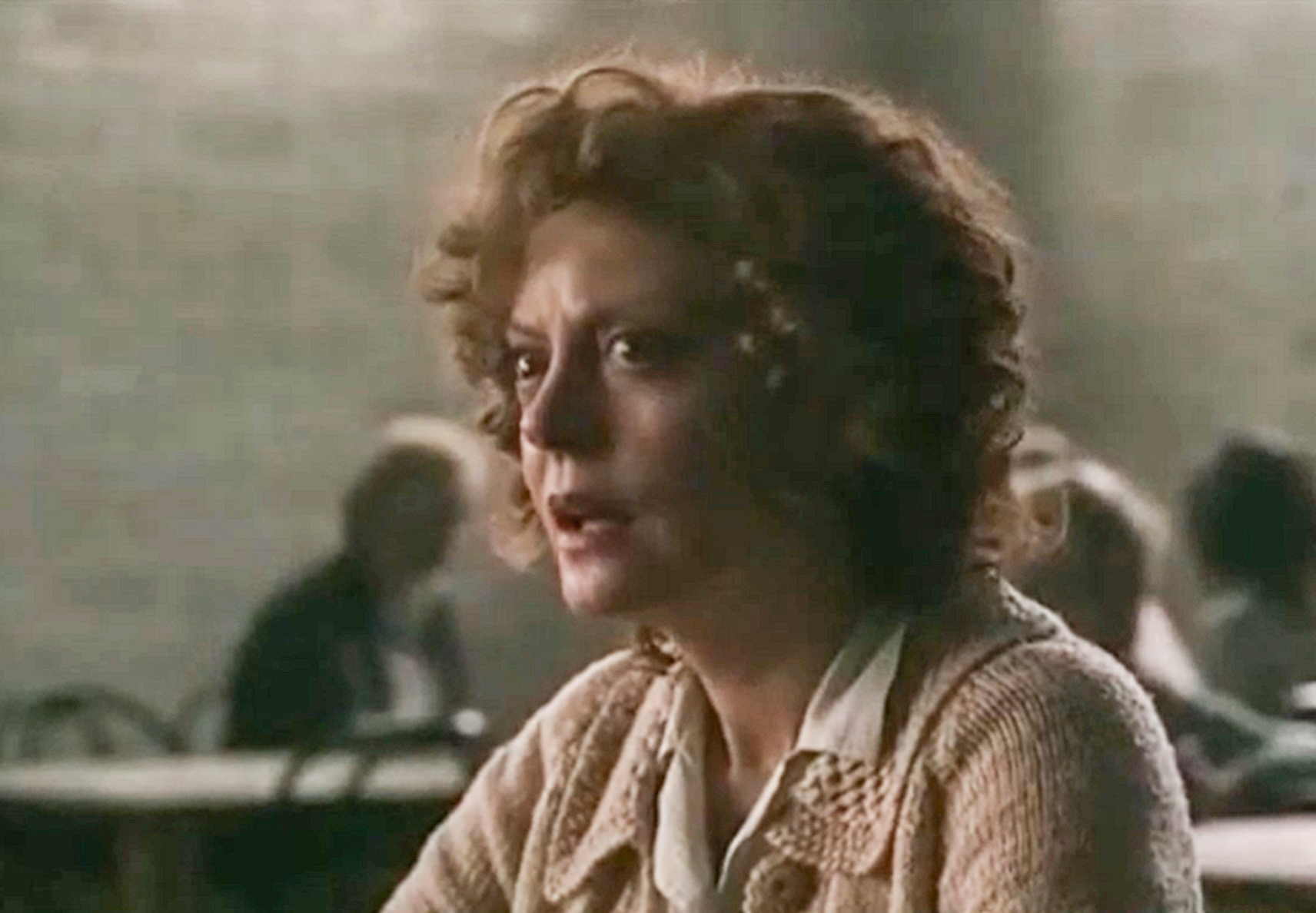 Don Carmody Television, The Secret Life Of Marilyn Monroe (2015)
Don Carmody Television, The Secret Life Of Marilyn Monroe (2015)
41. He Left Her with Nothing
As it turns out, Eley actually was already a married man. After his passing, his original wife emerged on the scene to claim everything her husband left behind. Courts mandated his first wife get everything, leaving Baker empty-handed. With no man to care for her, and at the mercy of passing time, she fell back on her daughter for help.
 Fireworks Entertainment, Blonde (2001)
Fireworks Entertainment, Blonde (2001)
42. Her Daughter Came To Her Rescue (Again)
Baker began working at a nursing home, but likely didn’t make enough to take care of herself alone. Luckily for her, her daughter’s success on screen made her notably wealthy. Monroe dutifully took on the responsibility of sending money to her mother regularly. And yet, it wasn’t enough to help Baker maintain a normal life. Fate had another dark twist in store for her.
 Marilyn Monroe, Wikimedia Commons
Marilyn Monroe, Wikimedia Commons
43. She Lost Her Mind
By 1953, Baker found herself back at a mental institution, this time the Rockhaven Sanitarium. It’s not clear exactly what got her back there. But judging by her history, her mental state was definitely compromised. Monroe continued to send her money, which she responded to by consistently begging her daughter to get her out of there. Another tragedy soon came back to haunt her.
 Joanna Linkchorst, CC BY-SA 3.0, Wikimedia Commons
Joanna Linkchorst, CC BY-SA 3.0, Wikimedia Commons
44. Her Daughter Followed in Her Footsteps
In 1961, Gladys Baker saw a disturbing newscast about Monroe. Reporters shared that doctors admitted her to a clinic in New York because she'd considered taking her own life. Considering her own struggles with her mental health, Baker likely found this distressing. Her response was catastrophic.
 Eugene Kornman, Wikimedia Commons
Eugene Kornman, Wikimedia Commons
45. She Tried To End It All
Still at the sanitarium, doctors found Baker passed out and bleeding from one wrist. Reports don’t definitely identify this as an attempt to end her own life, but the scene is certainly cause for question. Nevertheless, she survived it, and continued her back and forth with her daughter, right up to their unforgettable final interaction.
 Plan B Entertainment, Blonde (2022)
Plan B Entertainment, Blonde (2022)
46. She Resisted Help
Marilyn Monroe went to the Sanitarium in 1962 to visit Baker, but not necessarily on friendly terms. She brought along her own doctor, hoping he’d prescribe her the same medicine her mother was on. To Monroe’s surprise, her mother had been refusing to take the treatment for some time. The actress didn’t take the news well.
 Dell Publications, Inc., Wikimedia Commons
Dell Publications, Inc., Wikimedia Commons
47. They Couldn’t Agree
As any daughter might, Monroe tried her best to convince Baker to accept her treatments. Baker continued to refuse, declaring she preferred to lean on her religious beliefs for restoration. The two parted on these terms, but not without Monroe giving her mother a parting gift—a flask that Baker accepted gratefully.
Reportedly, Baker's last words to her daughter were, “You’re such a good girl, Norma Jeane". Neither knew that this was their very last exchange.
 Plan B Entertainment, Blonde (2022)
Plan B Entertainment, Blonde (2022)
48. She Lost Her
Monroe passed later that year—and even today, her mysterious demise continues to intrigue fans. If you’re keeping track, you’ll realize this is just another addition to the list of family members Baker lost too soon, including her father, mother, grandfather, and son. She managed to live on for two more decades, but not in much peace.
49. She Hated Her Life
If her many efforts to escape the sanitarium are any indication, Baker hated life at the mental institution. She hated it so much that she once snuck out and made it fifteen miles away to a local church—on foot! Her escapes caused authorities to move her to another even more secure institution, but some type of relief eventually came her way.
 Plan B Entertainment, Blonde (2022)
Plan B Entertainment, Blonde (2022)
50. She Went Quietly
In 1967, Baker finally got her wish when the hospital released her from their ward. Her last surviving child, her daughter Berniece, took her in for a short while. She remained in Monroe’s care monetarily, as the star left her a six figure trust fund. Berniece ultimately moved her mother to a retirement home, where she passed in 1984.
 Plan B Entertainment, Blonde (2022)
Plan B Entertainment, Blonde (2022)


